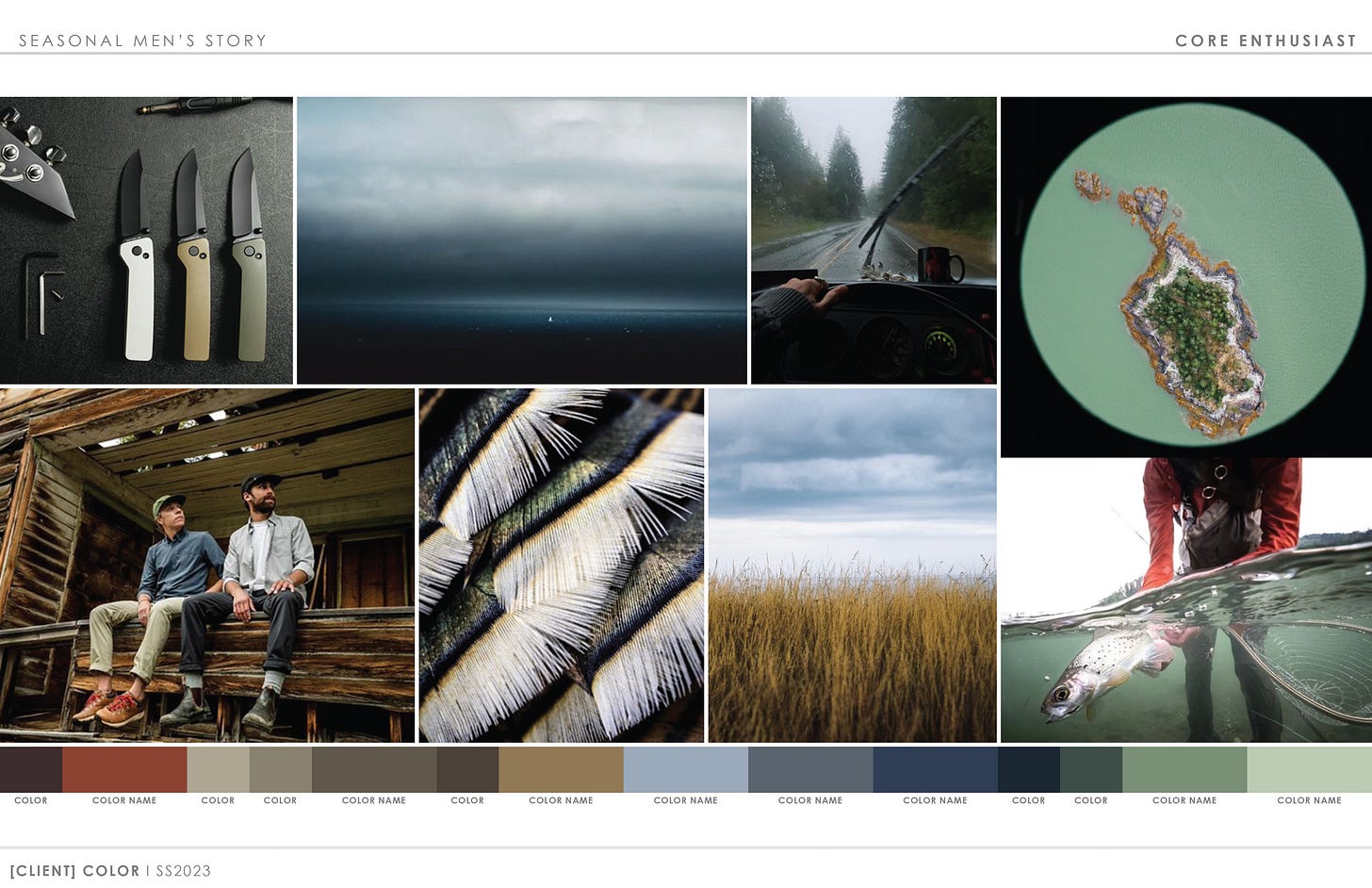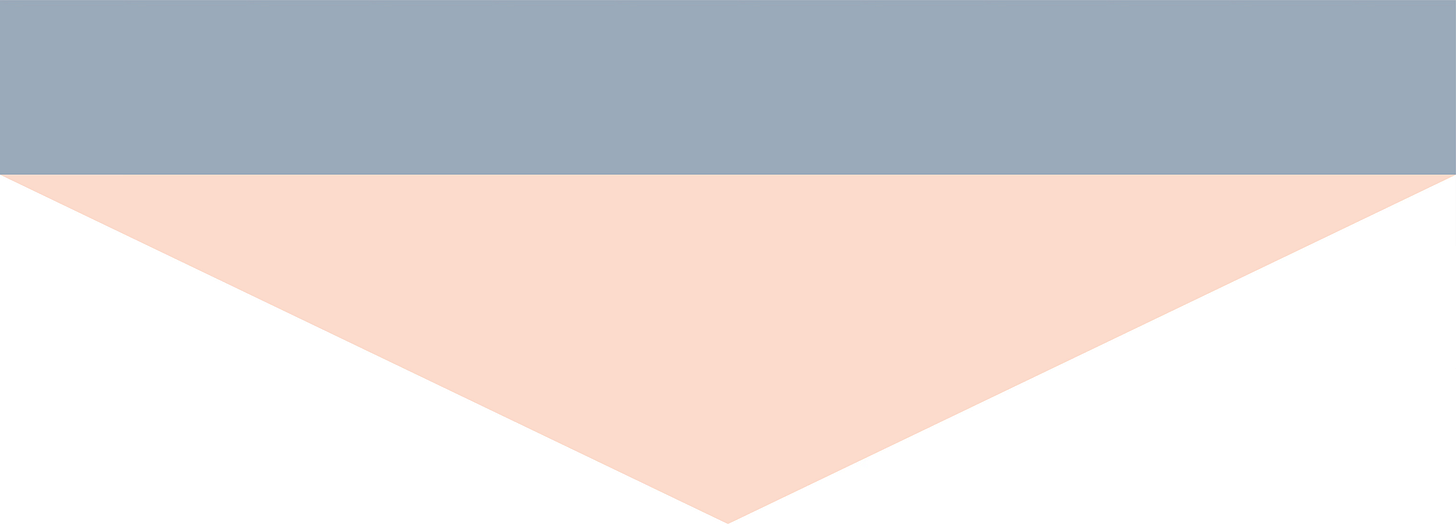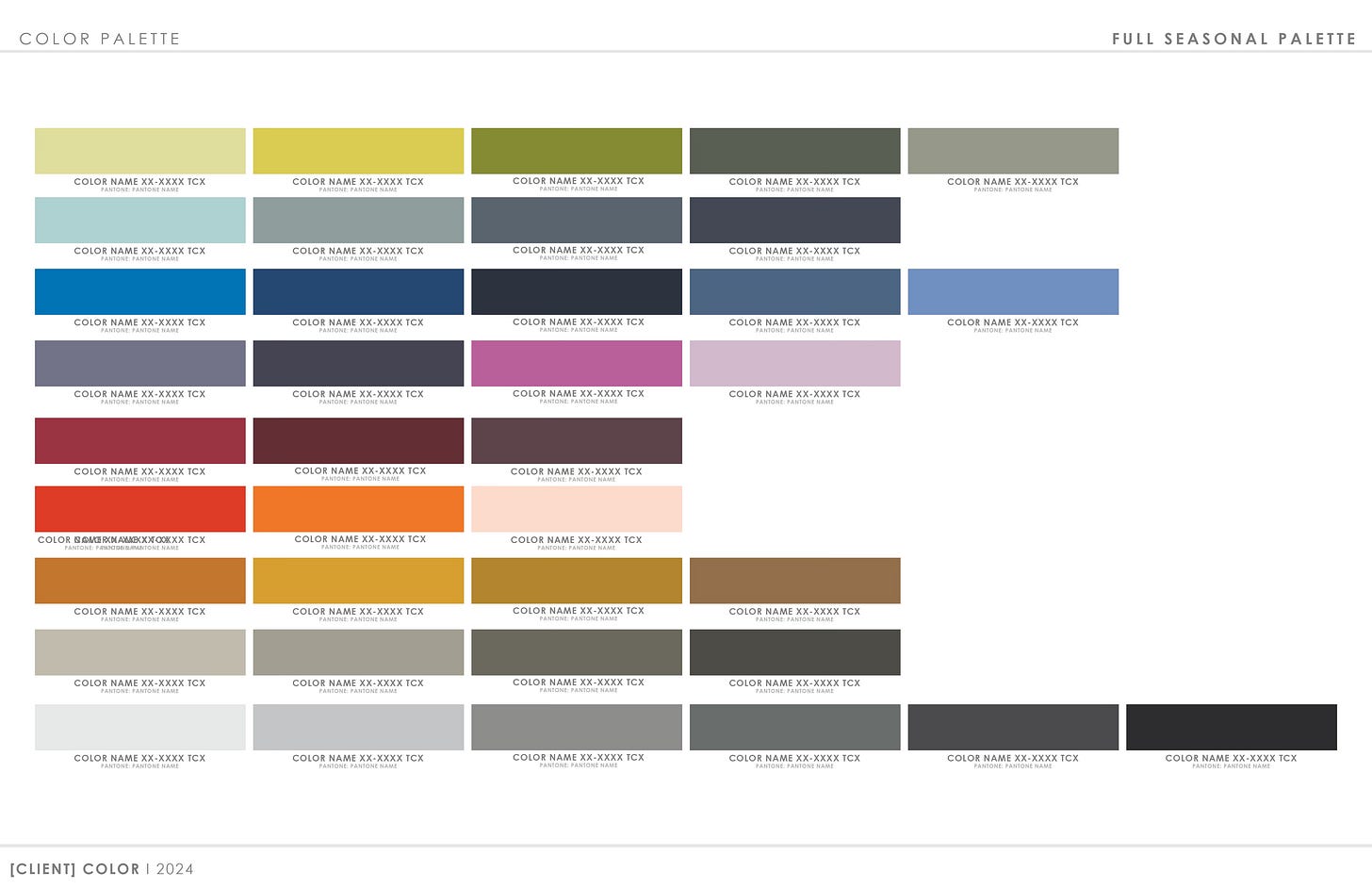I just wrapped up FW2026 color strategy with a client. The process was smooth, the outcome strong - and best of all, the whole team is stoked.
We followed a pretty standard process that I have seen work again and again. I wanted to share the steps here in hopes that it is valuable to you too. Because if there’s one thing I’ve learned in 2+ decades of working on color, it’s that color brings up a lot of emotions and opinions. The process can get messy. So, when you find a way to successfully navigate through, it’s a true win.
The Goal
First, let’s define what the goal of the color process is. The goal is to create a color strategy that supports and helps achieve a brand’s metrics. A great color strategy should have both tangible and intangible benefits. It needs to wow - with hard numbers (like high volume sales) and with meaning (like appealing to people’s emotions). A well-executed color process designs a strategy that elevates the brand’s positioning, captures customers’ hearts, is timely, and produces a healthy bottom line.
In my experience, the color process is broken into two main parts - first, creating the seasonal vision, and second, achieving the vision. In this issue, we’ll define and go through the steps for the first - Creating the Vision. Next issue, we’ll dive into the second - Achieving the Vision.
Creating the Vision
The first part of the color process sets the vision for the season. It outlines the consumer sentiments, macro themes, and color trends that are relevant to the brand and its audience. This establishes what influences will shape the seasonal color strategy by highlighting the trends and global movements that matter to the brand that season.
This part of the process is also where the color palette is created, most often evolved from the previous season’s in a manner that feels natural yet new. Key colors are defined to evoke the season’s goals and messaging. Each is supported with visuals and language that explain why they matter - so the brand team fully understands their purpose and importance. Depending on the size and organization of the line, sub-palettes for different categories will be pulled from the main color palette and outlined here as well.
Lastly, this part of the process establishes the plan for how the trends and color palette will be translated across the product line. It creates the color merchandising blueprint. How this is presented varies depending on the product type, average number of colors on a product, client preference, and product line organization. But typically, the merchandising plan is organized by category. For each category, the target color story(s) is outlined, and how it will be applied to products is shown via color silos or blocks.
Now, the steps to create the vision -
Step #1. Color Brief
First step is the color brief, created by the client. In an ideal world, this is a document. Often, it is a conversation or kick off meeting.
The key information the brief needs to include are color insights, color needs, and seasonal color opportunities. Insights include what colors are or aren’t working (or have or haven’t worked). These insights should never be prescriptive; they should, however, be weighed and considered in the context of the future season.
Color needs can best be met by communicating what the color job is. What does the color need to accomplish? How long does it need to be in the line? What product, market, and consumers does it need to be relevant to?
Color opportunities are the actual places in the line where new color will be applied that season. This is so important to define and something many color processes miss! Outlining these opportunities allows the color strategy to be specifically designed to them. This promises maximum impact. Without this knowledge, you risk building a color strategy that is disconnected from the needs of your line. For example, you could end up with a palette full of progessive colors trying to fill color slots that require core, long-term colors.
Step #2. Create the Seasonal Trend + Color Strategy
Step 2 is a big creative lift, requiring focus, research, and work. It builds the seasonal trend + color strategy. This is usually presented in a deck that includes all the strategic assets outlined in the “Creating the Vision” section above.
The trend + color decks I create are built to the specific client’s needs, but in general, are organized like this:
Macro Trends: key directions that make sense for that brand and their audience for that season
Macro Color: key color families, directions, or trends relevant to the brand
Color Palette: seasonal palette, how it’s evolved, key colors, sub-palettes
Color Merchandising Plan: seasonal color stories, color application by category, gender, market
[If you want more details on exactly how to do Step #2, I go through this in depth in these two previous issues: How to Create a Brand’s Color + Trend Strategy and The Smart Way to Simplify + Strengthen Your Color Strategy.]
Step #3. Review 1 - Small Group
Step 3 is the first review with the client, done with a select, small team - typically the design team and product line managers. The goal is to limit participants to those that are intimately involved with and affected by color, design, and merchandising.
It’s this team’s role to evaluate the practicality and evocative power of the proposed trends, color palette, and color merchandising plan. They need to confirm color feasibility, placement, and purpose. Are all the seasonal color needs being met? Is color evolving in a meaningful way? Does the strategy feel on-brand? Will manufacturers and materials be able to meet proposed color specifications?
And, perhaps most important, does the trend + color strategy look and feel right?
This crew of folks tends to have a fantastic understanding of the pulse of the brand, as well as be tuned into awesome, future trends and possibilities. That’s so incredibly valuable for dialing in the creative strategy, especially at this point where time and options are still fairly open.
Feedback should be collectively heard and discussed. If the strategy shifts in one area, it will likely affect others. It’s best practice to openly talk through these decisions and find the ideal solution together.
Based on feedback and any new insights since the color brief, the trend + color strategy gets revised and updated.
The goal at the end of review 1 is to get everyone in this small team on the same page - creatively and strategically - and stoked for the season.

Step #4. Review 2 - Large Group
The next review involves a larger group - the key brand stakeholders, which typically means the leadership team. Sales, marketing, operations, development (if not included in review 1), and the brand president (at small to mid-size companies) attend this review. The same small team from the first review also attends.
Whereas the first review focused more on the resonance as well as the nuts and bolts of the trend + color strategy, the second review focuses on the holistic impact. How will the strategy amplify the brand’s broader vision and goals?
In this review, each department should voice any concerns as well as insight on how the strategy supports their needs and initiatives. Again, let this feedback be collectively shared.
Sales and marketing are usually the most vocal and most important resources at this review. Sales can speak to how the strategy meets (or doesn’t) the needs and requests of reps and retailers. Sales can also begin branstorming what tools to build to increase understanding, sell-in, and sell-through.
Marketing can work with the color and design team to start creating messaging and visuals that align with the strategy, ensuring the whole seasonal storytelling is powerful and cohesive.
This is the time to be honest about what the brand has the bandwidth and the budget for. It’s the time to be clear about how the brand is going to position itself and its products.
The trend + color strategy gets updated and finalized from this feedback. So, it’s incredibly important to spend the time and effort to think through everything at this time. This ensures that the brand can plan for and execute a compelling, integrated strategy.
The end goal of the second review is similar to the first, but on a broader scale - the goal here is for the larger team to feel solid and confident in the creative strategy… and be excited to see it come to life.


Step #5. Final
The last step in this part of the process is to get final sign off once all changes from the reviews have been made.
If there were significant revisions coming out of review 2, it’s a good idea to make this an official meeting. Present and discuss again with the larger team. Revise again if needed. (And if this is needed, rethink how the information and feedback is being communicated. There’s a disconnect here.)
If changes were minimal and easy to visualize, I find a meeting isn’t necessary. (We’re all busy enough.)
The final trend + color deck should be shared out with everyone so that it can begin to be incorporated into the brand plan for the season. It becomes a key reference tool and the creative asset that sets the look and feel of the line.
And it drives the second part of the color process - Achieving the Vision.
I’ll go into the details for that in the next issue. If you’re not already subscribed, sign up now to get it. Know someone who would find this helpful? I’d love if you shared it with them.
And tell me - what’s your color process like? Frustrating? Endless? Chaotic? Perfect? Let me know. I’d love to hear.
Take care,
Dawn Rae
I help brands understand what their customers will love and value in the future, and I create the color design + trend strategy to get them there.
I design client-specific seasonal trend forecasts, color palettes, and color merchandising plans. Find a full outline of my services here.
If you are curious about working together, reach out: knoth@dawnrae.com.
Subscribe and share below. I so appreciate both.
Connect with me elsewhere:
website: dawnrae.com
socials: LinkedIn Instagram
Creative Intelligence: all issues





